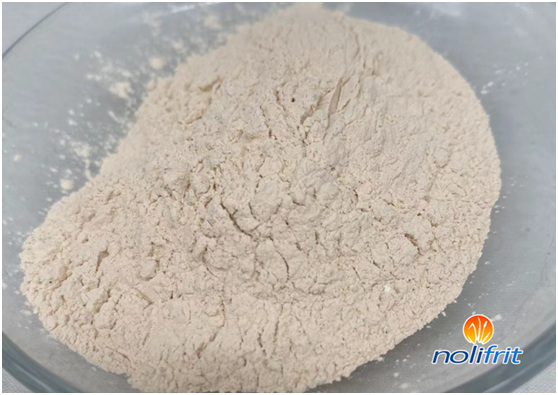Properties of Various Fluxing Agent for Enamel
1. Sodium carbonate
Sodium carbonate, commonly known as soda ash, is divided into crystalline soda ash and calcined soda ash. Commonly used in enamel enamels is calcined soda ash. The molecular formula is Na2CO3, the molecular weight is 106, and the melting point is 851°C. It is a white, odorless powder that easily absorbs moisture and agglomerates, and is easily soluble in water. Therefore, it must be stored in a dry warehouse. Soda ash theoretically contains 58.53% Na2O and 41.47% CO2. During melting, Na2O is transferred into the glass and CO2 gas escapes. The loss of soda ash melting is also relatively large.
Sodium carbonate reacts with quartz sand to form silicate at 793°C:
Na2CO3+SiO2→Na2SiO3+CO2↑

2. Potassium carbonate
Potassium carbonate is commonly known as potash, and calcined potash is used in enamel. The molecular formula is K2CO3, the molecular weight is 138.2, theoretically it contains 68.2% K2O, 31.8% CO2, the melting point is 891°C, the density is 2.3g/cm³, and it begins to decompose at 900°C. Potassium carbonate is a white crystalline grain, easily soluble in water and deliquescent in the air, so it should be stored carefully. During melting, K2O has a large volatilization loss during melting, which can reach 12% of its own weight, so attention should be paid to replenishing.
3. Red lead
Lead red, also known as red lead, has a molecular formula of Pb3O4, a molecular weight of 685.6, a density of 9.1g/cm³, a melting point of 888°C, and a decomposition temperature of 500°C. It is an orange-red heavy powder that generates PbO and O2 when decomposed. In addition to fluxing, it also has a strong oxidizing effect, and the reaction is as follows:
Pb3O4→3PbO+1/2O2↑
However, PbO is very easy to reduce, and it must rely on the oxygen released by itself when Pb3O4 decomposes to maintain the PbO state, otherwise it will be reduced to metallic lead, making the enamel black.
The introduction of PbO into the enamel can improve the gloss and fineness, as well as the mechanical strength. Because of its toxicity, it is not introduced into daily-use enamel, and is generally used for cast iron enamel, art enamel and high-insulation enamel.
4. Lithium carbonate
The molecular formula is Li2CO3, the molecular weight is 73.9, and the melting point is 618°C. It is a non-toxic, colorless white powder, easily soluble in acid and slightly soluble in water.
The ingredient introduced into the enamel is Li2O, which is a strong flux. Li2O can endow enamel with good physical and chemical properties, which can greatly improve the surface gloss and fineness of enamel, increase elasticity, and improve the alkali resistance of industrial acid-resistant enamels. At the same time, it can increase enamel. Excellent impact strength, lower viscosity, but can increase the expansion coefficient of enamel.
Li2O can also be used as an important raw material for microcrystalline enamel. When the porcelain layer is heat-treated, microcrystals such as eucryptite (Li2O•Al2O3•4SiO2) are precipitated and become microcrystalline enamel.
There are many fluxes besides the above ones. Some milky raw materials, such as calcium fluoride, sodium fluorosilicate, and some carbonates in auxiliary raw materials, in addition to their own special functions, can also play a role in melting during the melting process, and silicon dioxide, etc. Raw materials with high refractoriness form low-temperature eutectics to achieve the purpose of lowering the melting temperature.
5. Mix the flux
The use of mixed flux can replace part of borax, which can reduce the melting temperature of enamel and improve some physical and chemical properties of enamel, and the effect is very significant. At present, the most used is too solvent (V26). The composition of titanium flux is close to sodium silicon titanate, and a small amount of other oxides and fluorides are introduced. After batching, it is melted, quenched into blocks, and then mixed with enamel batches after grinding. Melted together. It can reduce the melting temperature of enamel, improve the gloss of porcelain surface, and save borax. In addition, glass powder or water glass can also be used to introduce batch materials, which can also play a role in fluxing and saving borax. However, it has not been widely used in actual production.